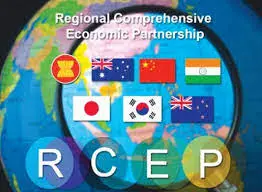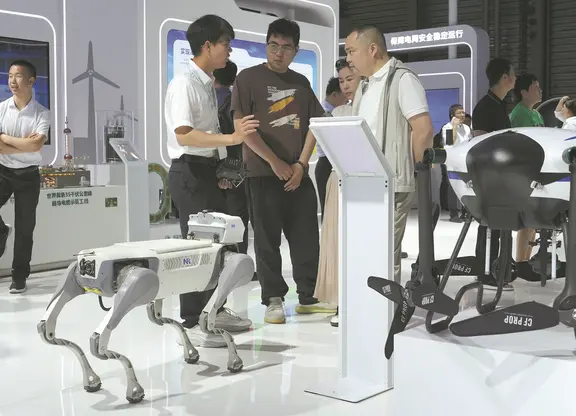By APD writer Alice
History shows that sometimes the transformation takes place slowly, but also sometimes it moves very fast. It can be said that the Regional Comprehensive Economic Partnership (RCEP), signed in mid-November, has brought about two major breakthroughs to the Asia-Pacific region.
On November 15, 2020, after 8 years of negotiation, 15 countries including 10 ASEAN nations and China, Japan, South Korea, Australia and New Zealand officially signed the RCEP. On November 20, at the Asia-Pacific Economic Cooperation (APEC) Summit, Chinese President Xi Jinping announced that Beijing would actively consider joining the Comprehensive and Progressive Agreement for Trans-Pacific Partnership (CPTPP). This is an obvious move by the Chinese leader towards the CPTPP and it is of particular importance.
Over the past 10 years, whether in China or in the world, there have been controversial opinions around the RCEP and the Trans-Pacific Partnership (TPP) - the predecessor of the CPTPP. Accordingly, some analysts believed that the RCEP was a tool to lead the Asian economic order of China, while Chinese experts said that the TPP was a lever for the US and Japan to curb the rise of this country.
RCEP: A tool for China to integrate deeper into Asian economy
First of all, the RCEP is based on respect for the diversity of the region's development and a pragmatic approach to promote Asian economic integration agreements. Like the traditional growth model of the Chinese economy, the development of Asian economies still relies much on external resources and markets. Furthermore, the interdependence among Asian economies is not high.
The economic growth model that is highly dependent on external factors revealed great vulnerability in the 1997-1998 Asian financial crisis and the 2008-2009 Wall Street financial crisis.
The greatest achievement that the 15 countries have attained in signing the agreement is the standardization of rules of origin for goods exchanged in the free trade area. It is crucial for setting up more flexible supply chains in the region. Accordingly, cooperation between production chains in this region will be tighter, meaning that the Chinese economy will be more bound to the regional economic order. This will give other economies a sense of peace.
Secondly, China, Japan and South Korea are the three largest economies in the region. However, they had not yet reached any progress in negotiating bilateral and multilateral free trade agreements due to different drags. Therefore, signing the RCEP this time means that the three countries have indirectly implemented a part of the free trade agreement. China and Japan are the world's second and third largest economies, while South Korea ranks 10th. The trio are also members of the world's top emerging and developed economies (G20), so their correlation is very strong, with a high level of interdependence, and wide prospects for economic integration.
For China, although its decision to ink the RCEP will have impact on a number of industries, it was determined to participate in. This is in stark contrast to the attitude of India, showing that Beijing wants to adopt mutual economic integration between China, Japan and South Korea in order to nurture the resilience of the tripartite relations.
Therefore, for China, the RCEP is like a "golden cage". China is willingly to lock itself into the gold cage of regional economic order, helping the region feel secure for common development.
CPTPP has strict requirements in Asia-Pacific region
Looking at the past, first of all, TPP - the precursor of the CPTPP - was initiated by some relatively small economies such as Singapore and Brunei ..., and then gradually formed under the active participation of Japan and the promotion of the administration of President Barack Obama.
In terms of origin, TPP was not first invented by big countries like the US and Japan. One of its important goals is to help the US play an active role in the Asia-Pacific economic order in the new era, so the signing of the TPP means that the US signs the first legal document with East Asia. This would be a landmark event in the US’s East Asia strategy.
Historically, the relationship between the US and Asia depends heavily on bilateral relations and treaties, but there is still no common framework between the US and East Asia. In this respect, the TPP, proposed by some small countries, was in fact to promote the relationship between the US and East Asia based on more multilateralism.
The kick-off of the TPP process was carried out in sync with the "Asian rebalance" strategy initiated by the Obama administration. The situation of Japan was similar. After the 1990s, outdated economic structural reforms led to low growth lasting for more than 20 years.
The earliest decision to join the TPP negotiations was made by Prime Minister Noda Yoshihiko under the rule of the Democratic Party (DPJ), while the consumption tax hike was also decided under his rule. All of these issues were inherited by Shinzo Abe after the Liberal Democratic Party (LDP) came to power. From which it can be seen that Japan had a high consensus on the TPP issue.
The Abe administration took the TPP as an opportunity to do things that the Prime Ministers of Japan could not do in the previous 20 years in terms of agricultural cooperative reform and reduction of corporate income tax. This motivation was basically the same as China’s WTO accession negotiations to promote domestic reforms.
Meanwhile, China needed to join the TPP, now the CPTPP, to promote a new round of open-door reforms. The rise of China has drastically changed the balance of economic power in the Asia-Pacific region today, with its GDP accounting for 15% of the world and its trade topping the globe.
At the same time, compared to the United States after World War II, China's role in the process of building economic order in the Asia-Pacific region is enormous. According to the International Monetary Fund (IMF), in 2015, China's import turnover accounted for 12% of the world, while developed Asia-Pacific economies such as Japan, the US, South Korea… made up about 37%. Furthermore, compared to these economies, China is still not the world's major importer of end consumer goods.
As an economic cooperation agreement in the age of knowledge economy, in addition to tariff reduction, the CPTPP also involves a lot of new contents such as protection of intellectual property rights and regulations on data flow, in which there are many regulations relating to the new knowledge economy. Meanwhile, the RCEP is more inclined to cutting traditional international trade barriers. Therefore, the CPTPP can become an important external pressure for China's new open-door reform round, thereby creating a new impetus for the country to undertake reforms at home.
Right to leadership and future of Asia-Pacific economic order
The signing of the RCEP and China's active consideration of joining the CPTPP has sparked a wave of discussions on the right to lead the East Asian economic order shifting to China.
The economic leadership of the US in the Asia-Pacific region and even the world has been formed in history, not entirely based on big strategies. In the context that the United States has outstanding economic, technological, military, and cultural power and the key countries are unable to assume the responsibility of rebuilding the world order after World War II, the US leadership remains indispensable.
Meanwhile, with its increasing potential and strength, China is increasingly confident in setting goals in its relations with the United States. China proved more assertive, not afraid to collide with the US in protecting its "core interests" in order to step by step replace the US’s superpower position, first of all in the Asia-Pacific region.
It can be seen that there are many countries which are members of both the CPTPP and the RCEP. In other words, the relationship of these two agreements is cooperation and competition. In the future it is very likely that they will converge at some time, towards an unified Asia-Pacific. In this way, strategic skepticism between the US and China will also be improved institutionally. The two agreements are likely to become a way of implementing the Asia-Pacific Free Trade Area.
(ASIA PACIFIC DAILY)
 简体中文
简体中文





